Dry Eye Specialist in Milford, CT
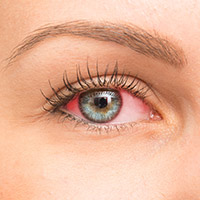
Symptoms
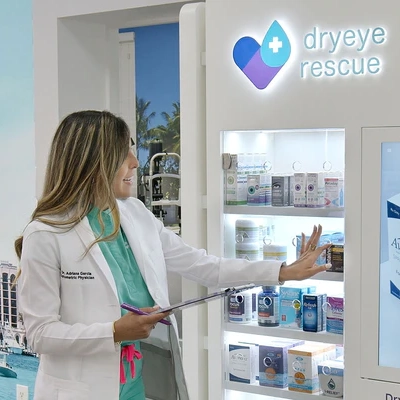
Products

Causes
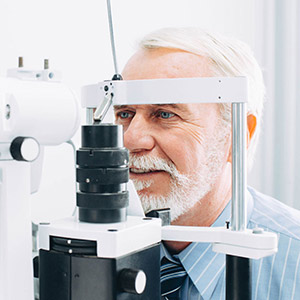
Evaluation

Treatments
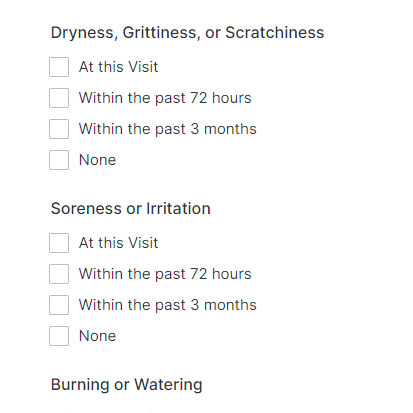
Online Survey
Dry Eye Specialist, Milford, CT
Serving Milford, Orange, West Haven, Stratford, Monroe & New Haven, CT
Dry eye disease is a common condition that occurs when the eyes do not produce enough tears or when the quality of the tears is poor. Untreated dry eye syndrome can damage the surface of the eye and can lead to vision problems over time.
Treating dry eye disease is crucial to prevent complications that could affect your eye health and vision. It helps protect your eyes from infections, corneal abrasions, and ulcers that could lead to more discomfort and potential damage. By addressing the underlying causes and managing dry eye symptoms, you can maintain clear and comfortable vision.
The benefits of seeking treatment go beyond your eyes themselves. By effectively managing dry eye symptoms, you can improve your quality of life. Daily activities like reading, using digital screens, driving, and enjoying hobbies won’t be hindered by discomfort anymore.
What are the symptoms of dry eye disease?
Symptoms of dry eye disease can vary from person to person, but common symptoms include:
- A feeling of dryness, itching, or burning in the eyes
- Soreness or pain in the eyes
- Redness of the eyes
- Blurred vision
- Sensitivity to light
- A stringy or sticky discharge from the eyes
- A feeling of something in the eye (foreign body sensation)
- Eyelid inflammation or swollen eyes
- Increased tear production (watery eyes)
- Difficulty wearing contact lenses
- Heavy eyelids
If left untreated, dry eye can lead to more serious eye conditions. For example, chronic dry eye can increase the risk of eye infections, corneal ulcers, and even vision loss in rare cases.
Dry Eye Products
Shop dry eye products online with ease and convenience. Over 300+ dry eye products from trusted brands.
Use coupon code LIGHTHOUSE10 for a discount.

What causes dry eye disease?
There are many different reasons people can develop dry eye disease. If you’re experiencing symptoms of dry eye disease, it’s important to get a customized evaluation of the underlying causes to effectively treat it.
Meibomian gland dysfunction
Meibomian gland dysfunction (MGD) is a common cause of dry eye disease. The meibomian glands are in the eyelids and are responsible for producing the oily layer of the tear film, which helps to prevent tear evaporation. When these glands become blocked or malfunction, they can no longer produce the necessary oily layer, causing the tears to evaporate too quickly.
Symptoms of MGD can include eye discomfort, redness, a feeling of grittiness, and a sensation of burning or stinging. In severe cases, MGD can also lead to thickened, irregular eyelid margins and the formation of meibomian cysts (chalazions).
Blepharitis
Blepharitis is an inflammation of the eyelids that usually affects both eyes. The eyelids may appear red or swollen, and you may feel an itchy, burning sensation. The eyelashes can also become matted or turn inward, which can cause irritation and even infection.
Several factors can contribute to blepharitis, including bacterial infections, bacterial overgrowth, or an allergic reaction. Sometimes, it can also be caused by a blockage in the oil glands located in the eyelids, which can lead to dry eye disease. This can then lead to irritation and dryness, which makes blepharitis worse, creating a vicious cycle.
Demodex mites
Blepharitis and dry eye disease can be caused by an infestation of tiny mites known as Demodex. Demodex mites are found on many people and are considered normal. However, an infestation can occur when the mite population exceeds the usual limit.
When they multiply excessively on the eyelashes, they can cause inflammation of the eyelids, leading to symptoms such as redness, itching, and a gritty feeling in the eyes. This inflammation can also damage the oil glands in the eyelids, contributing to the development of dry eye disease.
Factors such as weakened immunity, genetic predisposition, or excessive oil production can create a more favorable environment for mites to flourish, leading to an infestation. A diagnosis is typically made by examining an eyelash under a microscope.
Cosmetics
Certain ingredients in cosmetics can exacerbate dry eye symptoms or even cause them to develop. Preservatives, fragrances, and certain dyes found in many cosmetics can irritate the eyes and lead to dryness, redness, and itching.
Cosmetics can also contribute to the development of blepharitis by obstructing the oil glands in the eyelids, leading to bacterial overgrowth and inflammation.
Another way cosmetics can lead to dry eyes is by blocking the tear ducts, which are responsible for draining tears away from the eyes. This blockage can cause a buildup of tears, resulting in dryness and discomfort.
Certain medical conditions
Conditions like rheumatoid arthritis and Sjögren’s syndrome can lead to a decrease in tear production or affect the quality of the tears, resulting in dry, uncomfortable eyes.
Medications
Certain medications, like antihistamines and antidepressants, can sometimes cause dry eyes as a side effect.
Digital eye strain
Dry eye symptoms may occur as a result of prolonged computer use or digital devices, as you blink less often when staring at screens.
Environmental factors
Environmental factors, such as wind, sun, and air conditioning, can also contribute to dry eyes.
Evaluation of dry eye disease
If you are experiencing dry eye symptoms, it is important to see an eye doctor who can diagnose dry eye disease and determine the underlying cause. Our dry eye specialist in Milford, CT, has the diagnostic technology and expertise necessary to diagnose and treat dry eye disease, leading to good outcomes for patients.
Diagnosing dry eye at our office in Milford typically involves a comprehensive eye exam and a discussion of your symptoms and medical history. During the exam, Dr. Dincher will evaluate your tear production, the quality of your tears, and the overall health of your eyes.
He may also perform additional tests to assess the amount and quality of your tears, such as a tear breakup time test. These tests help him determine the underlying cause of your dry eye and recommend a personalized treatment plan to fit your specific needs.
Dry eye treatment in Milford, CT
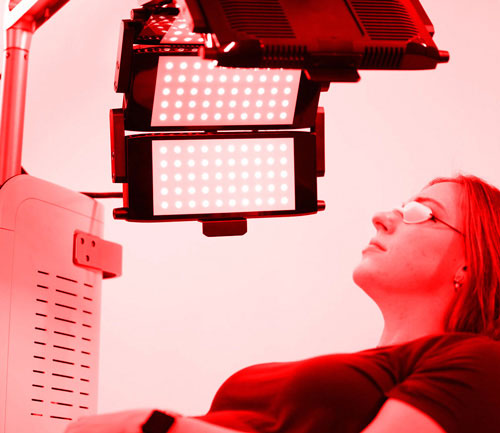
InfinityPro Low–Level Light Therapy (LLLT)
InfinityPro LLLT is a gentle treatment that uses precise wavelengths of light to boost cellular activity and healing, alleviating dry eye symptoms.
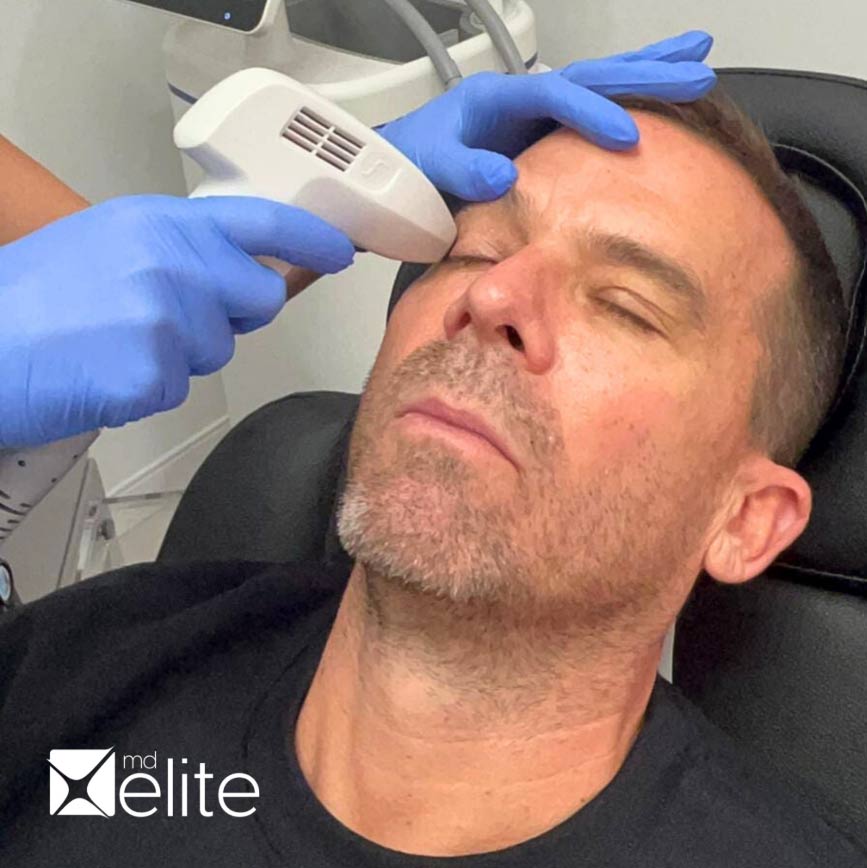
iProElite IPL and RF
By enhancing the performance of your tear film and meibomian glands, iProElite promotes healthier eyes and provides substantial relief from dryness and irritation.
Visit us for expert dry eye care in Milford
Are you looking for dry eye treatment near Orange, West Haven, Stratford, Monroe, New Haven, or the surrounding areas? If you have been feeling the painful, irritating symptoms of dry eye disease, visit our dry eye specialist in Milford, CT. You don’t need to live with these symptoms! We will fully evaluate your eye health and create a customized treatment plan for your dry eye.


